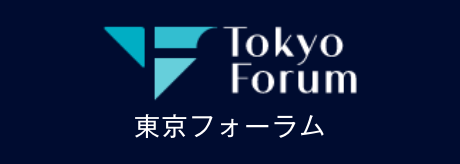A Life Between Japan and the United States—My Encounter with Japanese Literature and the State of the Field

Getting a Job in Japanese Literature
I want to turn now to the present and future of Japanese literary studies in the United States and how it might relate to Japan. Let me start from the issue of getting a job and getting tenure.
When interviewing for a job in Japanese literature in North America or Great Britain, the interview committee will typically consist of a person in English or French literature, history, religion, or some other field. There is probably only one person with any knowledge of Japanese culture on the committee. There are two stages to a career: first getting hired for a full-time position and second getting tenure after six years. Getting tenure requires a published book, part of a second book, and some articles. The tenure committee, too, generally consists of faculty outside the field of Japanese literature. This reflects the general state of the field in which Japanese literature is a small field. There are many universities without any Japanese literature faculty. If there is one faculty, it is usually modern literature or film.
Interdisciplinary and Trans-National Approaches
I have been fortunate in being able to place more than 35 PhDs, mostly in premodern Japanese literature, over three decades. How then is this possible? First, one must recruit the best students and train them to be able to read both carefully and widely. Second, their PhD dissertation must appeal to those both inside the field of classical studies and those outside who have little or no knowledge. The same is with the job interview. They must be able to frame their topic in such a way that it will also appeal to those outside the field. This means acquiring knowledge and methodology outside of Japanese literature that outsiders, especially in European studies, will be able to relate to. Sometimes people refer to this as “theory,” but this does not mean something abstract or philosophical but rather learning the critical vocabulary in a subdiscipline.
For example, if a PhD student is studying kabuki, he or she would be expected to take classes in Shakespeare or European drama or develop a secondary field in performance studies or the history of theater. Even though they may not include Shakespeare in their dissertation, they would know the critical issues and vocabulary in English. Theater and performance studies are independent disciplines, often with their own departments and programs. Even if the student does not include Shakespeare, European drama, or other East Asian theater in their dissertation, they would know the basic concepts of European theater or performance studies and be able to use them to frame the dissertation or chapters.
Many of our PhD students are from China, Taiwan, Korea, Hong Kong, or Singapore, so they may have the ability to read multiple literatures. We require the students to study at least two Asian languages. We also require the PhD students to have three to four different fields so that they can teach a variety of disciplines such as literature, religion, film, and visual culture. The department includes history, religion, literature, film, visual culture, and language with faculty in Japan, Korea, China, Vietnam, and Tibet.
The PhD student in classical Japanese literature might develop secondary fields in history, religion, film studies, theater, or art history. I generally suggest a triangle with one leg in classical Japanese literature, one in modern Japanese literature, and one in another discipline or area. Because modern Japanese popular culture and visual culture are now very popular with undergraduates, premodern Japanese literature students will often select Japanese film or popular culture as one of their secondary fields. Even if they do not teach film and anime, they usually incorporate this kind of material into their syllabi. This makes them more attractive on the job market. Small colleges cannot afford to hire multiple faculty in different fields in Japanese culture and expect the literature person to be interdisciplinary and to be able teach many different fields.
Decline of Literary Studies
A major issue is the decline of literary studies as a whole, nation-wide, and perhaps world-wide. Many departments that had been literature and language departments have evolved into culture departments. For example, the Spanish department at Columbia is now called the Department of Latin American and Iberian cultures and its faculty specialize in issues such as race, gender, post-colonial studies, literary theory, visual culture, performing art, trans-atlantic studies, intellectual history, immigration, and politics. Departments that do just literature become smaller and smaller. The French department is now half the size it was twenty years ago. The Latin American and Iberian cultures department, by contrast, incorporates social science disciplines, including anthropology and political science, into humanities.
The Latin American department may be an extreme example, but it raises the larger question of the future of literary studies. It will be difficult in the future for literary studies to stand alone, independent of other disciplines. Forty years ago, the undergraduate major in East Asian studies concentrated on the humanities, especially literature, religion, history, and language, but in the last thirty years, the East Asian major has expanded to include social sciences, economics, public health, law, and other fields, with students taking courses in various departments and schools. All of these students must take an East Asian language and our core courses on history and humanities. Students will often double major in East Asian studies and economics. Most undergraduates will not become scholars of East Asia, but their background in East Asia will be an important part of their professional career.
Reflecting these larger trends, the Japanese literature program has evolved from a Japanese literature program into Japanese literature, visual culture, and film program. Most undergraduates want to study Japanese film, anime, manga, or popular culture. In fact, about two-thirds of those who take Japanese language start for this reason.
Even Japanese literary studies in Japan may not be immune to this trend. With smaller population and pressure for disciplines to be more “useful” to the contemporary world, literature departments may diminish in size or become “Japanese culture” departments. There is also the pressure to make Japanese literary or cultural studies more global or to connect it directly to the contemporary world.
The issue of the job market and academic training raises the larger issue of English-language scholarship on classical Japanese literature and Japanese scholarship. Of course, there is no comparison in terms of numbers, quality, and depth. There are probably at least 10,000 scholars of Japanese literature, but less than 400 outside of Japan. But English-language scholarship has an important role to play since it has the potential to link Japanese literature and Japanese literary scholarship to the rest of the world.
I say “potential” since linking is difficult. I give an example from my one experience. After writing the book on The Tale of Genji, I thought that I would write a book on poetics, a comparative study, comparing Japanese poetics with some aspect of European poetics. Literary theory and poetic theory had become a major field in European studies, and I thought that I could bring Japanese literary theory into a global context. I wrote an article on Fujiwara Shunzei’s Korai futeisho (particularly on hon’i), and compared it with recent ideas on intertextuality. It was an attempt to show that Japanese poetics could contribute to the history of literary theory. But the more I read karon (classical poetry theory), rengaron (linked verse theory), nogakuron (noh theatre theory), and hairon (haiku poetry theory), the more I realized how different this was. Though there was some complex Buddhist philosophy in nogakuron, and though Edo kokugaku (nativist studies) debates made sense as type of poetics, I realized that “literary theory” and “aesthetics” were European concepts that were not appropriate for understanding most of Japanese poetry. Essentially, Japanese poetics is about practice, direct participation, and group activity. Karon is generally written from the point of view of the composer, not the reader or critic. The same is true of rengaron, nogakuron, and hairon. In short, my attempt to write a comparative poetics ended in failure, but the causes for failure were very revealing, and I ended up writing a very different book on haikai.
As an American educated in the Western-style system, my axis of comparison was, as the child of the Cold War, United States and Japan, or Europe and Japan. But often what I thought was unique to Japan often turned out to be a common feature of East Asia. Thus, one has to be super careful and to look at the larger East Asian literary landscape, which is not easy to do. These failures teach us not to be Eurocentric, not to measure things by European or modern terms, including the word “literature” (bungaku). I am, for example, very wary of the term “world literature” since it tends to be based on the European notion of “literature.”
In short, transnational approaches are difficult, but the attempts at comparison or to find common ground is an important exercise because it attempts to place Japanese literature and culture in a broader context, which is essential when you are teaching undergraduates who have no knowledge of Japan or Asia. It also helps the PhD student develop a critical vocabulary that connects outside the immediate field of classical Japanese literature.
In other words, we do not encourage PhD students to be comparative without a deep knowledge of or close reading of texts in their historical context. That is very dangerous and can result in very careless and superficial “distant readings.” However, PhD students should be prepared to teach undergraduate courses in multiple disciplines or in a broader East Asian context or the Sinitic sphere and to frame their work so that outsiders can understand and connect to their work.
Tomi Suzuki and I were asked by Waseda University to create a new department called “Kokusai Nihon gaku” (International Japanese culture studies), which would teach Japanese literature and culture in English for both Japanese and non-Japanese studies. Four of our PhD students are now professors in that new department. These kinds of departments are increasing in Japan.
My present research projects, one on the environment, and another on the early and medieval roots of yōkai (supernatural, monsters, ghosts, etc.), are both attempts to create a bridge between classical Japanese literature to other disciplines as well as to connect premodern literature to the present. Here yōkai and its relationship to popular and contemporary culture become a means of drawing the audience into a premodern literature, culture, religion, and social history. Environmental studies is something almost all undergraduates are interested in, so if some connections can be made between classical Japanese literature and environmental humanities that will be fortunate. Both of these fields are also highly interdisciplinary.
Teaching Japanese Language
Another key to getting a job is teaching experience. All jobs require prior teaching experience either in content courses or in Japanese language. PhD students are on full fellowships, and they are not allowed to teach at other places. In order to give the Phd students teaching experience, we have two types of TAs (teaching assistant) assignments from the second year. One is to be a section leader in a large course. All courses over 25 students required a weekly discussion section. PhD students will attend the lectures given by the faculty and teach the discussion sections, which are limited to less than 20 students each. One of the required undergraduate major courses is called East Asian Humanities, which begins with the Analects, Mencius, and Story of the Stone, goes to the Japanese classics, with some representation of Korea or Vietnamese literature. The seminar, which is limited to twenty students, is team-taught by a professor and a PhD student. If the professor is in Chinese literature, the PhD student is in Japanese literature. This allows the PhD student in Japanese literature to teach premodern Japanese literature while receiving training from the professor.
In North America, the teaching of Japanese literature usually goes hand-in-hand with teaching modern Japanese language. The first thing students do in college is study the language. Only later do they study the literature. Rarely is it the reverse. All colleges have a foreign language requirement, and many students choose Japanese. To have a Japanese language program you need at least two or three teachers, one of whom is probably a literature scholar. When I got a job at USC, I taught third and fourth-year Japanese in addition to literature and culture. Colleges and universities normally will not hire a history, religion, or art history scholar to teach Japanese language but they will hire a Japanese literature specialist.
For this reason, we created a Japanese language pedagogy workshop-program for advanced PhD students. They learn the basic methods, use of different textbooks, etc. But usually the workshop is not sufficient experience, and PhD students often teach a temporary position for one or two years to get the necessary experience. Fortunately, the need for Japanese language courses has NOT declined. While Japanese history jobs have virtually disappeared, Japanese literature jobs, while decreasing in number, still remain relatively steady. Teaching language also has advantages since you can include short stories and essays in Japanese and also teach translation.
In Japan, Japanese scholars have the luxury of writing for an educated audience or specialists who have already read the text or know about the context. The PhD student or scholar writing in English, by contrast, must first introduce the text, which includes translating large parts of the text into English and providing historical, social, and intertextual context. There is a very high wall to climb, but translating the text into English can be very rewarding and yield rich insights.
Finally, let me give a specific example of our most recent job placement. Phuong Ngo, who is Vietnamese, got interested in Japanese through manga and anime, went to Wellesley College, and came to our PhD program, wanting to study the impact of the Tale of Genji on modern media. When Yoshino Tomomi was staying at Columbia, we taught a waka graduate seminar together, and Phuong became very excited by waka, and decided to do work on the Ise shū and different types of early Heian waka genres for her dissertation. Phuong came to Tokyo and studied with Yoshino sensei at Chūō daigaku (Chūō University). She also translated all of the Ise shū with English commentary and notes in addition to writing six chapters on zōtōka (poetry exchanges), daiei (poetry composed on set topics), utaawase (poetry contests), and the relationship of prose to poetry in the Ise shū. She wrote an excellent dissertation, but it was hard to get a job based only on a study of Heian waka. Fortunately, she got a one-year position at Bard College in New York, where she taught second and third-year Japanese, a course on the Tale of Genji and its reception in modern media, as well as a very popular course on the supernatural (yokai). Her talent and ability to teach these courses very successfully got her a full-time offer this spring. She has a bright future.
In conclusion, I think it is absolutely essential that our PhD students receive training in Japan, with the leading scholars here, and make friends with Japanese PhD students. I was very luck to come to the University of Tokyo, to have Nagashima-san as my tutor, and to work closely with many Japanese scholars. Without that, I would not be here today. At the same time, there is probably a lot to learn from the techniques used in the North American system and from interaction with European and North American scholars. It is not a question of which is better but rather that, for the future, both are probably necessary.








